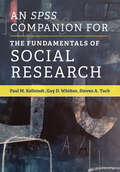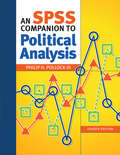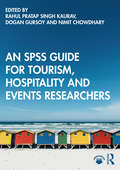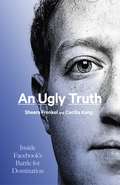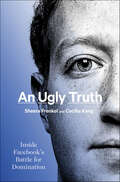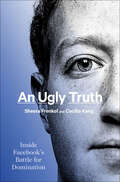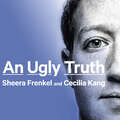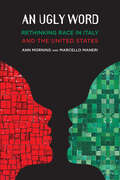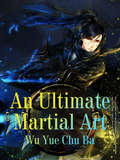- Table View
- List View
An SPSS Companion for The Fundamentals of Social Research
by Paul M. Kellstedt Guy D. Whitten Steven A. TuchAn SPSS Companion for The Fundamentals of Social Research offers students the opportunity to delve into the world of SPSS using real data sets and statistical analysis techniques directly from Paul M. Kellstedt, Guy D. Whitten, and Steven A. Tuch's new textbook. Workbook sections parallel chapters in the main text, giving students a chance to apply the lessons and techniques learned in each chapter in a statistical software setting. Detailed chapters teach students to reproduce results presented in the textbook, allowing them to become comfortable performing statistical analyses for evaluating causal claims through repeated practice. Step-by-step instructions for using SPSS are provided, along with command lines and screenshots to demonstrate proper use of the software. Instructions for producing the figures and tables in the main text are integrated throughout the workbook. End-of-chapter exercises encourage students to formulate and evaluate their own hypotheses.
An SPSS Companion to Political Analysis
by Philip H. PollockIn this much-anticipated revision of Pollock's popular SPSS workbook, students dive headfirst into actual political data and work with a software tool that prepares them for future political science research. Students learn by doing with guided examples, more than 120 screenshots, and step-bystep instructions.
An SPSS Guide for Tourism, Hospitality and Events Researchers
by Dogan Gursoy Rahul Pratap Singh Kaurav Nimit ChowdharyThis is the first book to provide the student of tourism, hospitality and events with all that they need to undertake statistical analysis using SPSS for research in their industry. Employing examples directly from the tourism, hospitality and events sector, it provides a comprehensive explanation on how appropriate statistical tools and methods can be identified for this research context and provides a step-by-step demonstration on how to carry out the chosen statistical operations. Each chapter opens with a sector-specific case study reflecting current research trends and issues from a range of different countries that are affecting the industry today. It is followed by an examination of the SPSS procedures relating to the case study and various solutions are offered. The implementation of clear, step-by-step demonstrations on how to carry out statistical operations using a combination of screenshots, diagrams, and tables aids the reader’s understanding. Chapters close with thorough guidance on how to appropriately write up interpretations of the research in a report. Research implications and recommendations for tourism and hospitality businesses are also provided, to enable them to successfully create and manage research strategies in action. Adopting an interdisciplinary perspective and written by a range of industry experts from all over the globe, this book will be essential for all students and researchers in the field of tourism, hospitality, and events as well as all those in related fields with an interest in statistical data analysis.
An Ugly Truth: Inside Facebook's Battle for Domination
by Sheera Frenkel Cecilia Kang'The ultimate takedown' New York Times'The problem of Facebook is Zuckerberg. And the question posed by this splendid book is: what are we going to do about him?' Observer'A comprehensive account . . . drawn from first-hand testimonies. Thoroughly engaging' The Times'What marks this book out is how it gets under the corporate bonnet . . . to build a picture of astounding corporate arrogance and irresponsibility' Sunday Times'An explosive new book' Daily Mail__________________________________________Award-winning New York Times reporters Sheera Frenkel and Cecilia Kang unveil the tech story of our times in a riveting, behind-the-scenes exposé that offers the definitive account of Facebook's fall from grace. Once one of Silicon Valley's greatest success stories, for the past five years, Facebook has been under constant fire, roiled by controversies and crises. It turns out that while the tech giant was connecting the world, they were also mishandling users' data, allowing the spread of fake news, and the amplification of dangerous, polarising hate speech. Critics framed the narrative as the irreconcilable conflict between the platform's lofty mission to advance society by bringing people together while also profiting off of them. The company, many said, had simply lost its way. But the truth is far more complex. Drawing on their unrivalled sources, Frenkel and Kang take readers inside the complex court politics, alliances and rivalries within the company, its growing political influence as well as its skirmishes with privacy groups and the FTC, to shine a light on the fatal cracks in the architecture of the tech behemoth. Their explosive, exclusive reporting led them to a shocking conclusion: The missteps of the last five years were not an anomaly but an inevitability - this is how the platform was built to perform. In a period of great upheaval, growth has remained the one constant under the leadership of Mark Zuckerberg and Sheryl Sandberg. Each has stood by as their technology is co-opted by hate-mongers, criminals and corrupt political regimes across the globe, with devastating consequences. In An Ugly Truth, they are at last held accountable.
An Ugly Truth: Inside Facebook's Battle for Domination
by Sheera Frenkel Cecilia KangThe award-winning insiders’ account of the scandals and toxic culture at Facebook—“thorough, high-caliber investigative reporting” (Kirkus, starred review).In An Ugly Truth, New York Times reporters Sheera Frenkel and Cecilia Kang present a behind-the-scenes exposé of Facebook’s fall from grace. They reveal explosive details about how the tech giant set out to connect the world—while also mishandling users’ data, spreading fake news, and amplifying dangerous, polarizing hate speech. The company, many said, had simply lost its way. But the truth is far more complex. Facebook’s engineers were instructed to create tools that encouraged people to spend as much time on the platform as possible, even if that meant promoting inflammatory rhetoric, conspiracy theories, and partisan filter bubbles. And while consumers and lawmakers were outraged by privacy breaches and misinformation, Facebook solidified its role as the world’s most voracious data-mining machine, posting record profits, and shoring up its dominance via aggressive lobbying efforts.Drawing on their unrivaled sources, Frenkel and Kang take readers inside the alliances and rivalries within the company to demonstrate that the company’s “missteps” were no such thing—this is how Mark Zuckerberg and Sheryl Sandberg built Facebook to perform. In An Ugly Truth, they are at last held accountable. A Book of the Year: Fortune, Foreign Affairs, The Times (London), Cosmopolitan, TechCrunch, WIRED
An Ugly Truth: Inside Facebook's Battle for Domination
by Sheera Frenkel Cecilia KangA riveting New York Times–bestselling exposé of Facebook’s fall from grace.Facebook has been under constant fire for the past five years, roiled by controversies and crises. As the tech giant was connecting the world, it was also mishandling users’ data, spreading fake news, and amplifying dangerous, polarizing hate speech—while relentlessly pursuing growth.The company, many said, had simply lost its way. But the truth is far more complex. Mark Zuckerberg and Sheryl Sandberg, held up as archetypes of uniquely twenty-first-century executives, attempted to deflect attention from the crises. And while consumers and lawmakers focused their outrage on privacy breaches and misinformation, Facebook solidified its role as the world’s most voracious data-mining machine, posting record profits and shoring up its dominance via aggressive lobbying efforts.Drawing on their unrivaled sources, award–winning New York Times reporters Sheera Frenkel and Cecilia King unravel the tech behemoth’s complex politics, alliances, and rivalries to expose the fatal cracks in its architecture. They reveal how its missteps were not an anomaly but an inevitability—this is how Facebook was built to perform.WINNER OF THE SABEW BEST IN BUSINESS AWARDA Book of the Year: Fortune, Foreign Affairs, The Times (London), Cosmopolitan, TechCrunch, WIRED
An Ugly Truth: Inside Facebook's Battle for Domination (Language Acts and Worldmaking #29)
by Sheera Frenkel Cecilia Kang'The ultimate takedown' New York Times'The problem of Facebook is Zuckerberg. And the question posed by this splendid book is: what are we going to do about him?' Observer'A comprehensive account . . . drawn from first-hand testimonies. Thoroughly engaging' The Times'What marks this book out is how it gets under the corporate bonnet . . . to build a picture of astounding corporate arrogance and irresponsibility' Sunday Times'An explosive new book' Daily Mail__________________________________________Award-winning New York Times reporters Sheera Frenkel and Cecilia Kang unveil the tech story of our times in a riveting, behind-the-scenes exposé that offers the definitive account of Facebook's fall from grace. Once one of Silicon Valley's greatest success stories, for the past five years, Facebook has been under constant fire, roiled by controversies and crises. It turns out that while the tech giant was connecting the world, they were also mishandling users' data, allowing the spread of fake news, and the amplification of dangerous, polarising hate speech. Critics framed the narrative as the irreconcilable conflict between the platform's lofty mission to advance society by bringing people together while also profiting off of them. The company, many said, had simply lost its way. But the truth is far more complex. Drawing on their unrivalled sources, Frenkel and Kang take readers inside the complex court politics, alliances and rivalries within the company, its growing political influence as well as its skirmishes with privacy groups and the FTC, to shine a light on the fatal cracks in the architecture of the tech behemoth. Their explosive, exclusive reporting led them to a shocking conclusion: The missteps of the last five years were not an anomaly but an inevitability - this is how the platform was built to perform. In a period of great upheaval, growth has remained the one constant under the leadership of Mark Zuckerberg and Sheryl Sandberg. Each has stood by as their technology is co-opted by hate-mongers, criminals and corrupt political regimes across the globe, with devastating consequences. In An Ugly Truth, they are at last held accountable.
An Ugly Word: Rethinking Race in Italy and the United States
by Ann Morning Marcello ManeriScholars and politicians often assume a significant gap between the ways that Americans and Europeans think about race. According to this template, in the U.S. race is associated with physical characteristics, while in Western Europe race has disappeared, and discrimination is based on insurmountable cultural differences. However, little research has addressed how average Americans and Europeans actually think and talk about race. In An Ugly Word, sociologists Ann Morning and Marcello Maneri examine American and Italian understandings of group difference in order to determine if and how they may differ. Morning and Maneri interviewed over 150 people across the two countries about differences among what they refer to as “descent-based groups.” Using this concept allowed them to sidestep the language of “race” and “ethnicity,” which can be unnecessarily narrow, poorly defined, or even offensive to some. Drawing on these interviews, the authors find that while ways of speaking about group difference vary considerably across the Atlantic, underlying beliefs about it do not. The similarity in American and Italian understandings of difference was particularly evident when discussing sports. Both groups relied heavily on traditional stereotypes of Black physicality to explain Black athletes’ overrepresentation in sports like U.S. football and their underrepresentation in sports like swimming – contradicting the claims that a biological notion of race is a distinctly American phenomenon. While American and Italian concepts of difference may overlap extensively, they are not identical. Interviews in Italy were more likely to reveal beliefs about groups’ innate, unchangeable temperaments, such as friendly Senegalese and dishonest Roma. And where physical difference was seen by Italians as superficial and unimportant, cultural difference was perceived as deeply meaningful and consequential. In contrast, U.S. interviewees saw cultural difference as supremely malleable—and often ascribed the same fluidity to racial identity, which they believed stemmed from culture as well as biology. In light of their findings, Morning and Maneri propose a new approach to understanding cross-cultural beliefs about descent-based difference that includes identifying the traits people believe differentiate groups, how they believe those traits are acquired, and whether they believe these traits can change. An Ugly Word is an illuminating, cross-national examination of the ways in which people around the world make sense of race and difference.
An Ultimate Martial Art: Volume 10 (Volume 10 #10)
by Wu YueChuBaIn previous life, in order to save his sister, Su Ye volunteered to sacrifice for the gods of nine heavens. He did not expect that all this is the man's trick to let him die in vain. Su Ye had learned the truth, was unacceptable for a moment, and died with hatred.At the moment Su Ye in the previous life died , another young boy named Su Ye crossed over him. At a dangerous time between life and death, He replaced the previous Su Ye to start a new life.He inadvertently obtained a book of martial arts, gained a spcial power, and used this power to escape out of chaos. Since then, he has relied on this cheat book to improve his ability through cultivation, to avenge Su Ye of the previous life.As a soul that from another world came through, he eventually dominated the world!☆About the Author☆Wu Yue Chu Ba, a well-known online novelist. He has a wealth of creative experience and has authored many novels, most of them are fantasy types. His novels have deeply attracted most readers.一句话
An Ultimate Martial Art: Volume 11 (Volume 11 #11)
by Wu YueChuBaIn previous life, in order to save his sister, Su Ye volunteered to sacrifice for the gods of nine heavens. He did not expect that all this is the man's trick to let him die in vain. Su Ye had learned the truth, was unacceptable for a moment, and died with hatred.At the moment Su Ye in the previous life died , another young boy named Su Ye crossed over him. At a dangerous time between life and death, He replaced the previous Su Ye to start a new life.He inadvertently obtained a book of martial arts, gained a spcial power, and used this power to escape out of chaos. Since then, he has relied on this cheat book to improve his ability through cultivation, to avenge Su Ye of the previous life.As a soul that from another world came through, he eventually dominated the world!☆About the Author☆Wu Yue Chu Ba, a well-known online novelist. He has a wealth of creative experience and has authored many novels, most of them are fantasy types. His novels have deeply attracted most readers.一句话
An Ultimate Martial Art: Volume 12 (Volume 12 #12)
by Wu YueChuBaIn previous life, in order to save his sister, Su Ye volunteered to sacrifice for the gods of nine heavens. He did not expect that all this is the man's trick to let him die in vain. Su Ye had learned the truth, was unacceptable for a moment, and died with hatred.At the moment Su Ye in the previous life died , another young boy named Su Ye crossed over him. At a dangerous time between life and death, He replaced the previous Su Ye to start a new life.He inadvertently obtained a book of martial arts, gained a spcial power, and used this power to escape out of chaos. Since then, he has relied on this cheat book to improve his ability through cultivation, to avenge Su Ye of the previous life.As a soul that from another world came through, he eventually dominated the world!☆About the Author☆Wu Yue Chu Ba, a well-known online novelist. He has a wealth of creative experience and has authored many novels, most of them are fantasy types. His novels have deeply attracted most readers.一句话
An Ultimate Martial Art: Volume 13 (Volume 13 #13)
by Wu YueChuBaIn previous life, in order to save his sister, Su Ye volunteered to sacrifice for the gods of nine heavens. He did not expect that all this is the man's trick to let him die in vain. Su Ye had learned the truth, was unacceptable for a moment, and died with hatred.At the moment Su Ye in the previous life died , another young boy named Su Ye crossed over him. At a dangerous time between life and death, He replaced the previous Su Ye to start a new life.He inadvertently obtained a book of martial arts, gained a spcial power, and used this power to escape out of chaos. Since then, he has relied on this cheat book to improve his ability through cultivation, to avenge Su Ye of the previous life.As a soul that from another world came through, he eventually dominated the world!☆About the Author☆Wu Yue Chu Ba, a well-known online novelist. He has a wealth of creative experience and has authored many novels, most of them are fantasy types. His novels have deeply attracted most readers.一句话
An Ultimate Martial Art: Volume 14 (Volume 14 #14)
by Wu YueChuBaIn previous life, in order to save his sister, Su Ye volunteered to sacrifice for the gods of nine heavens. He did not expect that all this is the man's trick to let him die in vain. Su Ye had learned the truth, was unacceptable for a moment, and died with hatred.At the moment Su Ye in the previous life died , another young boy named Su Ye crossed over him. At a dangerous time between life and death, He replaced the previous Su Ye to start a new life.He inadvertently obtained a book of martial arts, gained a spcial power, and used this power to escape out of chaos. Since then, he has relied on this cheat book to improve his ability through cultivation, to avenge Su Ye of the previous life.As a soul that from another world came through, he eventually dominated the world!☆About the Author☆Wu Yue Chu Ba, a well-known online novelist. He has a wealth of creative experience and has authored many novels, most of them are fantasy types. His novels have deeply attracted most readers.一句话
An Ultimate Martial Art: Volume 15 (Volume 15 #15)
by Wu YueChuBaIn previous life, in order to save his sister, Su Ye volunteered to sacrifice for the gods of nine heavens. He did not expect that all this is the man's trick to let him die in vain. Su Ye had learned the truth, was unacceptable for a moment, and died with hatred.At the moment Su Ye in the previous life died , another young boy named Su Ye crossed over him. At a dangerous time between life and death, He replaced the previous Su Ye to start a new life.He inadvertently obtained a book of martial arts, gained a spcial power, and used this power to escape out of chaos. Since then, he has relied on this cheat book to improve his ability through cultivation, to avenge Su Ye of the previous life.As a soul that from another world came through, he eventually dominated the world!☆About the Author☆Wu Yue Chu Ba, a well-known online novelist. He has a wealth of creative experience and has authored many novels, most of them are fantasy types. His novels have deeply attracted most readers.一句话
An Ultimate Martial Art: Volume 16 (Volume 16 #16)
by Wu YueChuBaIn previous life, in order to save his sister, Su Ye volunteered to sacrifice for the gods of nine heavens. He did not expect that all this is the man's trick to let him die in vain. Su Ye had learned the truth, was unacceptable for a moment, and died with hatred.At the moment Su Ye in the previous life died , another young boy named Su Ye crossed over him. At a dangerous time between life and death, He replaced the previous Su Ye to start a new life.He inadvertently obtained a book of martial arts, gained a spcial power, and used this power to escape out of chaos. Since then, he has relied on this cheat book to improve his ability through cultivation, to avenge Su Ye of the previous life.As a soul that from another world came through, he eventually dominated the world!☆About the Author☆Wu Yue Chu Ba, a well-known online novelist. He has a wealth of creative experience and has authored many novels, most of them are fantasy types. His novels have deeply attracted most readers.一句话
An Ultimate Martial Art: Volume 17 (Volume 17 #17)
by Wu YueChuBaIn previous life, in order to save his sister, Su Ye volunteered to sacrifice for the gods of nine heavens. He did not expect that all this is the man's trick to let him die in vain. Su Ye had learned the truth, was unacceptable for a moment, and died with hatred.At the moment Su Ye in the previous life died , another young boy named Su Ye crossed over him. At a dangerous time between life and death, He replaced the previous Su Ye to start a new life.He inadvertently obtained a book of martial arts, gained a spcial power, and used this power to escape out of chaos. Since then, he has relied on this cheat book to improve his ability through cultivation, to avenge Su Ye of the previous life.As a soul that from another world came through, he eventually dominated the world!☆About the Author☆Wu Yue Chu Ba, a well-known online novelist. He has a wealth of creative experience and has authored many novels, most of them are fantasy types. His novels have deeply attracted most readers.一句话
An Ultimate Martial Art: Volume 18 (Volume 18 #18)
by Wu YueChuBaIn previous life, in order to save his sister, Su Ye volunteered to sacrifice for the gods of nine heavens. He did not expect that all this is the man's trick to let him die in vain. Su Ye had learned the truth, was unacceptable for a moment, and died with hatred.At the moment Su Ye in the previous life died , another young boy named Su Ye crossed over him. At a dangerous time between life and death, He replaced the previous Su Ye to start a new life.He inadvertently obtained a book of martial arts, gained a spcial power, and used this power to escape out of chaos. Since then, he has relied on this cheat book to improve his ability through cultivation, to avenge Su Ye of the previous life.As a soul that from another world came through, he eventually dominated the world!☆About the Author☆Wu Yue Chu Ba, a well-known online novelist. He has a wealth of creative experience and has authored many novels, most of them are fantasy types. His novels have deeply attracted most readers.一句话
An Ultimate Martial Art: Volume 19 (Volume 19 #19)
by Wu YueChuBaIn previous life, in order to save his sister, Su Ye volunteered to sacrifice for the gods of nine heavens. He did not expect that all this is the man's trick to let him die in vain. Su Ye had learned the truth, was unacceptable for a moment, and died with hatred.At the moment Su Ye in the previous life died , another young boy named Su Ye crossed over him. At a dangerous time between life and death, He replaced the previous Su Ye to start a new life.He inadvertently obtained a book of martial arts, gained a spcial power, and used this power to escape out of chaos. Since then, he has relied on this cheat book to improve his ability through cultivation, to avenge Su Ye of the previous life.As a soul that from another world came through, he eventually dominated the world!☆About the Author☆Wu Yue Chu Ba, a well-known online novelist. He has a wealth of creative experience and has authored many novels, most of them are fantasy types. His novels have deeply attracted most readers.一句话
An Ultimate Martial Art: Volume 20 (Volume 20 #20)
by Wu YueChuBaRumor has it that the Heavenly Road of Immortality and the Supreme Door of Immortality were able to grant eternal life after passing through. However, for the sake of eternal life, cultivators would go one after the other. Why would they become a malignant tumor in the eyes of the heavens?There were spells, celestial spells, and celestial spells.Heaven arts suppressed everything, and was the ancestor of all techniques. All techniques in the world did not originate from Heaven Arts.Su Ye, someone who had transmigrated here and was almost treated as a sacrifice …
An Ultimate Martial Art: Volume 3 (Volume 3 #3)
by Wu YueChuBaIn previous life, in order to save his sister, Su Ye volunteered to sacrifice for the gods of nine heavens. He did not expect that all this is the man's trick to let him die in vain. Su Ye had learned the truth, was unacceptable for a moment, and died with hatred.At the moment Su Ye in the previous life died , another young boy named Su Ye crossed over him. At a dangerous time between life and death, He replaced the previous Su Ye to start a new life.He inadvertently obtained a book of martial arts, gained a spcial power, and used this power to escape out of chaos. Since then, he has relied on this cheat book to improve his ability through cultivation, to avenge Su Ye of the previous life.As a soul that from another world came through, he eventually dominated the world!☆About the Author☆Wu Yue Chu Ba, a well-known online novelist. He has a wealth of creative experience and has authored many novels, most of them are fantasy types. His novels have deeply attracted most readers.一句话
An Ultimate Martial Art: Volume 4 (Volume 4 #4)
by Wu YueChuBaIn previous life, in order to save his sister, Su Ye volunteered to sacrifice for the gods of nine heavens. He did not expect that all this is the man's trick to let him die in vain. Su Ye had learned the truth, was unacceptable for a moment, and died with hatred.At the moment Su Ye in the previous life died , another young boy named Su Ye crossed over him. At a dangerous time between life and death, He replaced the previous Su Ye to start a new life.He inadvertently obtained a book of martial arts, gained a spcial power, and used this power to escape out of chaos. Since then, he has relied on this cheat book to improve his ability through cultivation, to avenge Su Ye of the previous life.As a soul that from another world came through, he eventually dominated the world!☆About the Author☆Wu Yue Chu Ba, a well-known online novelist. He has a wealth of creative experience and has authored many novels, most of them are fantasy types. His novels have deeply attracted most readers.一句话
An Ultimate Martial Art: Volume 5 (Volume 5 #5)
by Wu YueChuBaIn previous life, in order to save his sister, Su Ye volunteered to sacrifice for the gods of nine heavens. He did not expect that all this is the man's trick to let him die in vain. Su Ye had learned the truth, was unacceptable for a moment, and died with hatred.At the moment Su Ye in the previous life died , another young boy named Su Ye crossed over him. At a dangerous time between life and death, He replaced the previous Su Ye to start a new life.He inadvertently obtained a book of martial arts, gained a spcial power, and used this power to escape out of chaos. Since then, he has relied on this cheat book to improve his ability through cultivation, to avenge Su Ye of the previous life.As a soul that from another world came through, he eventually dominated the world!☆About the Author☆Wu Yue Chu Ba, a well-known online novelist. He has a wealth of creative experience and has authored many novels, most of them are fantasy types. His novels have deeply attracted most readers.一句话
An Ultimate Martial Art: Volume 6 (Volume 6 #6)
by Wu YueChuBaIn previous life, in order to save his sister, Su Ye volunteered to sacrifice for the gods of nine heavens. He did not expect that all this is the man's trick to let him die in vain. Su Ye had learned the truth, was unacceptable for a moment, and died with hatred.At the moment Su Ye in the previous life died , another young boy named Su Ye crossed over him. At a dangerous time between life and death, He replaced the previous Su Ye to start a new life.He inadvertently obtained a book of martial arts, gained a spcial power, and used this power to escape out of chaos. Since then, he has relied on this cheat book to improve his ability through cultivation, to avenge Su Ye of the previous life.As a soul that from another world came through, he eventually dominated the world!☆About the Author☆Wu Yue Chu Ba, a well-known online novelist. He has a wealth of creative experience and has authored many novels, most of them are fantasy types. His novels have deeply attracted most readers.一句话
An Ultimate Martial Art: Volume 7 (Volume 7 #7)
by Wu YueChuBaIn previous life, in order to save his sister, Su Ye volunteered to sacrifice for the gods of nine heavens. He did not expect that all this is the man's trick to let him die in vain. Su Ye had learned the truth, was unacceptable for a moment, and died with hatred.At the moment Su Ye in the previous life died , another young boy named Su Ye crossed over him. At a dangerous time between life and death, He replaced the previous Su Ye to start a new life.He inadvertently obtained a book of martial arts, gained a spcial power, and used this power to escape out of chaos. Since then, he has relied on this cheat book to improve his ability through cultivation, to avenge Su Ye of the previous life.As a soul that from another world came through, he eventually dominated the world!☆About the Author☆Wu Yue Chu Ba, a well-known online novelist. He has a wealth of creative experience and has authored many novels, most of them are fantasy types. His novels have deeply attracted most readers.一句话
An Ultimate Martial Art: Volume 8 (Volume 8 #8)
by Wu YueChuBaIn previous life, in order to save his sister, Su Ye volunteered to sacrifice for the gods of nine heavens. He did not expect that all this is the man's trick to let him die in vain. Su Ye had learned the truth, was unacceptable for a moment, and died with hatred.At the moment Su Ye in the previous life died , another young boy named Su Ye crossed over him. At a dangerous time between life and death, He replaced the previous Su Ye to start a new life.He inadvertently obtained a book of martial arts, gained a spcial power, and used this power to escape out of chaos. Since then, he has relied on this cheat book to improve his ability through cultivation, to avenge Su Ye of the previous life.As a soul that from another world came through, he eventually dominated the world!☆About the Author☆Wu Yue Chu Ba, a well-known online novelist. He has a wealth of creative experience and has authored many novels, most of them are fantasy types. His novels have deeply attracted most readers.一句话
